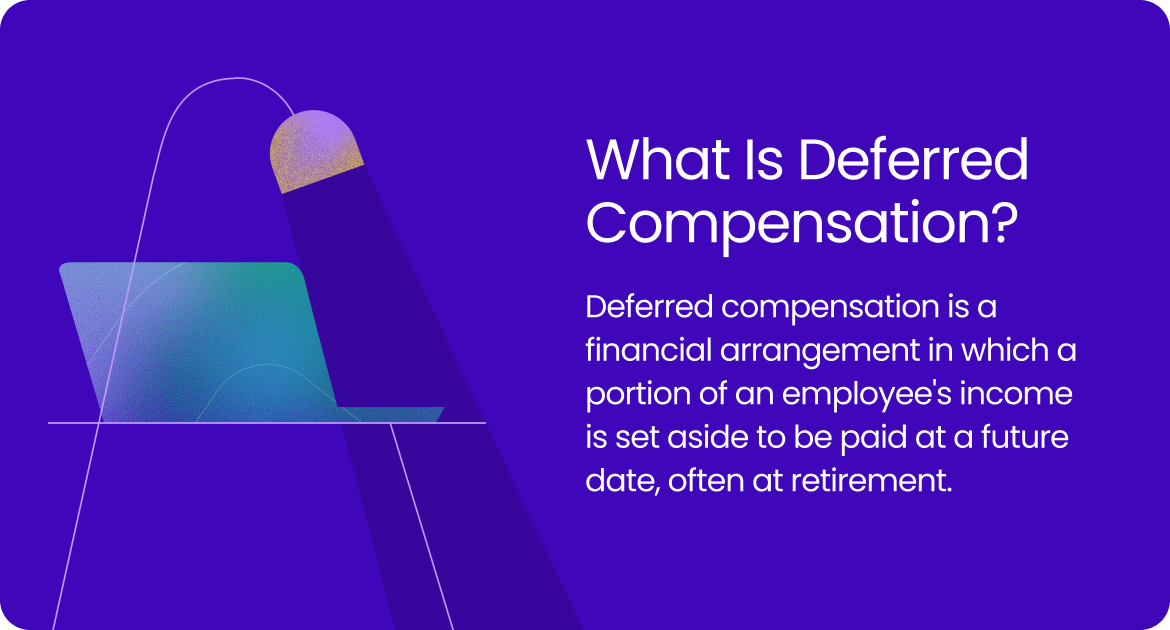As a business owner or human resources manager, you may come across the term "deferred compensation," which refers to an arrangement where a portion of an employee's earnings is set aside to be paid at a later date, typically during retirement. This strategy allows employees to postpone income taxation until they receive the funds, often resulting in tax benefits. Understanding deferred compensation is important because it can serve as a valuable tool for attracting and retaining talent, offering employees additional financial security for the future.
For example, a company might offer its executives a deferred compensation plan that allows them to defer a portion of their salary until retirement. This arrangement not only provides the executives with a future income stream but also aligns their interests with the long-term success of the company. However, it's crucial to manage these plans carefully to ensure compliance with tax laws and to maintain the financial health of the organization.

How Does Deferred Compensation Work?
In a deferred compensation plan, employees agree to delay a portion of their income, usually until retirement, thus reducing their current taxable income. This deferred income is then invested by the employer in a tax-deferred account, allowing it to grow over time. Upon retirement or reaching a specific date, employees can start withdrawing from their deferred compensation plan, paying taxes at that point.
Here’s an example to illustrate how deferred compensation works:
A high-level executive at a tech company earns an annual salary of $250,000. To reduce their taxable income now and prepare for retirement, the executive and their employer agree to defer 10% of their salary ($25,000) annually into a Nonqualified Deferred Compensation (NQDC) Plan.
The deferred funds are invested by their employer in one of several investment options, allowing them to grow tax-free over time. By the time the tech executive retires, their deferred compensation, with accumulated interest and investment gains, has grown to $350,000.
After the executive retires, they begin receiving their deferred compensation in installments. Since their retirement income is likely lower than their working income, they pay taxes on the deferred compensation at a lower tax rate, helping them keep more of their money.
Types Of Deferred Compensation Plans
Deferred compensation plans come in several types, each with unique structures, benefits, and regulations. Each type of deferred compensation plan serves different needs, with varying degrees of flexibility, tax advantages, and protections. Employers often choose plans based on company size, employee roles, and organizational goals. Here are the primary types of deferred compensation plans in the U.S. :
What Is The Difference Between Deferred Compensation vs. Other Retirement Plans?
Retirement plans like 401(k)s, IRAs, and pensions are types of deferred compensation. These types of plans fall under Qualified Deferred Compensation Plans. These plans are designed for broad employee access and are regulated under tax and labor laws, encouraging retirement savings for most workers with tax benefits.
Deferred Compensation typically includes non-qualified plans where employees (often executives) defer a portion of their income to be received in the future, outside of strict government regulations. Common examples include non-qualified deferred compensation (NQDC) plans, often reserved for higher earners.
The Benefits Of Deferred Compensation For Employers
When used strategically, deferred compensation can act as a tool for employers to build a committed workforce, manage expenses, and provide tailored benefits for top talent. Here are some of the advantages deferred compensation plans can offer employers:
Deferred Compensation FAQ

.png)
Yes, since deferred compensation is taxed upon withdrawal, timing it for retirement when you may be in a lower tax bracket can minimize your overall tax burden.

.png)
If you quit, what happens to your deferred compensation depends on your plan’s vesting schedule and payout terms. If you are not fully vested, you may lose some or all of the deferred funds.
.svg)
.svg)
.svg)
.svg)
.svg)





.svg)




.svg)



















.svg)